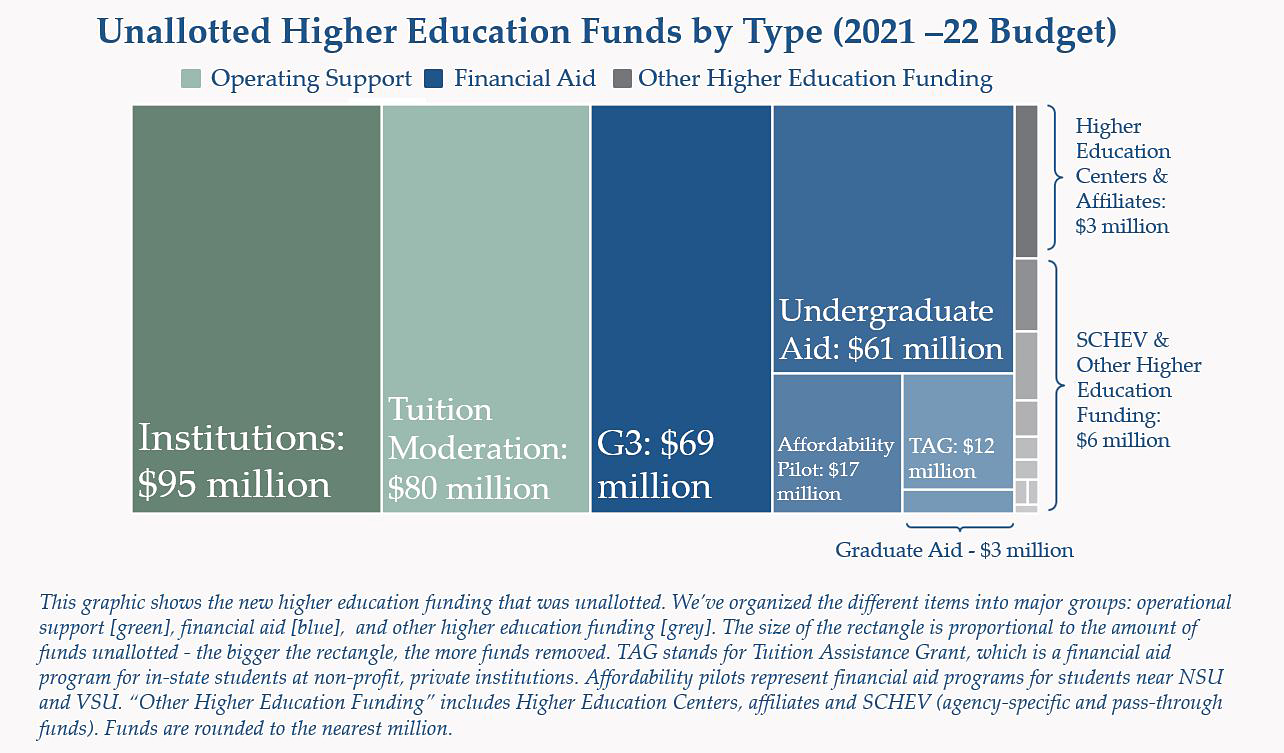Tom Allison, senior associate for finance policy and innovation
Later this week, Governor Ralph Northam will sign the state budget for the next two years. It contains many of the items the Northam administration proposed in his introduced budget, plus additional contributions from the General Assembly. At the end of the regular session, it was turning out to be a landmark budget for higher education in Virginia, with $389 million in new funding for students and institutions. This included $95 million for institutional initiatives, a $77 million increase to student financial aid and affordability programs, $69 million for free community college for low and middle-income students, and $80 million for tuition moderation (including a freeze for in-state undergraduate students in the first fiscal year of 2020-21).
However, the final budget included another crucial word: unallotted.
That’s because in between the Governor proposing the budget and his amendments, a global pandemic upturned economic activity and daily life across the state. Because we still don’t know the full impact on state revenues, the Governor proposed to pause almost all new funding by “unallotting” new funds in his amendments. The majority were approved by the General Assembly in the final budget. These investments are still in the budget - but they’re on hold until we better understand the full economic impact of COVID-19.
Given that the majority of revenues come from sources tied to economic activity - income, sales and corporate income taxes - higher education funding (and for that matter, state funding for just about everything) will take a hit. We don’t know how much or if this funding will be reallotted. However, it’s worth looking at what the state prioritized in higher education before the crisis:

In many ways, the budget had an increased focus on equity this year. It included changes to how financial aid was distributed, based on an in-depth review SCHEV conducted last fall. New funding for the Governor’s Get a Credential, Get a Job, Give Back (G3) program provided free tuition and fees at community colleges for low- and middle-income students pursuing associate degrees and certificates to meet workforce demand - a priority area included in SCHEV’s Strategic Finance Plan for Virginia. (Another goal of the plan is to support institutions to produce degrees in high-demand fields, was funded in the form of the Tech Talent Investment Pipeline.) It included more funding for institutions that serve minority and low-income students. Moreover, with Virginia's relatively high tuition and lower state funding, the funding to freeze tuition was set to give relief to all in-state undergraduate students attending public institutions. SCHEV also was funded to launch new projects in internships, college access and a review of funding of institutions.
Even though this budget is on pause, it brought together institutions, faculty, students and employers to commit to a more equitable and effective higher education system in Virginia. As more up-to-date revenue forecasts become available, Virginia's lawmakers will have tough decisions to make. But allotted or unallotted, this budget can serve as a blueprint to build from in the future.
Welcome to Insights, SCHEV's platform to interpret and communicate data and policy with the overall goal of informing policy-making, engaging institutions and drawing attention to these resources. Centered around SCHEV's nationally leading data collection, each Insight will visualize complex ideas and help inform funding and policy decisions.
